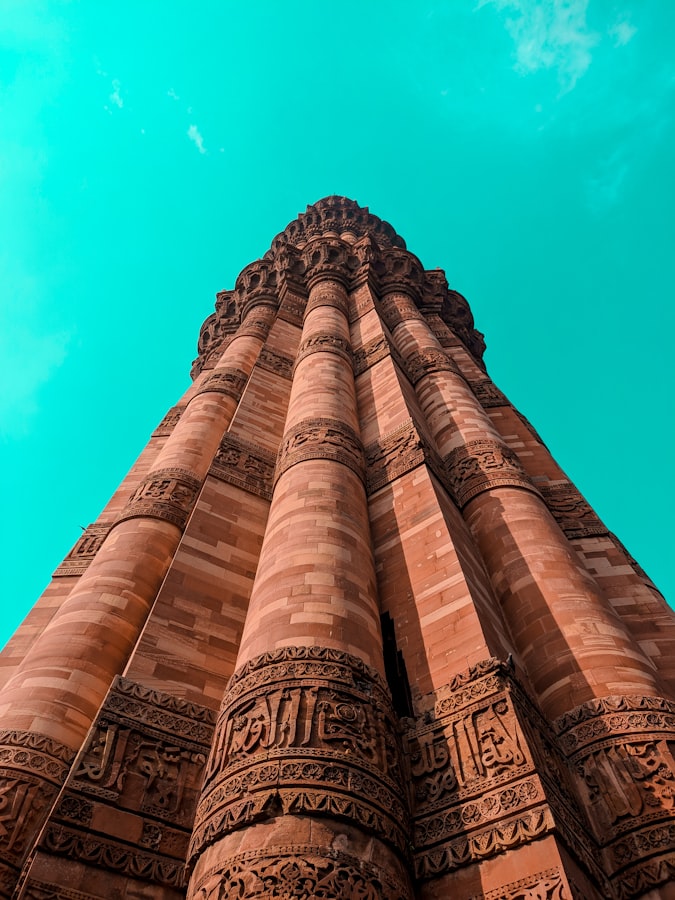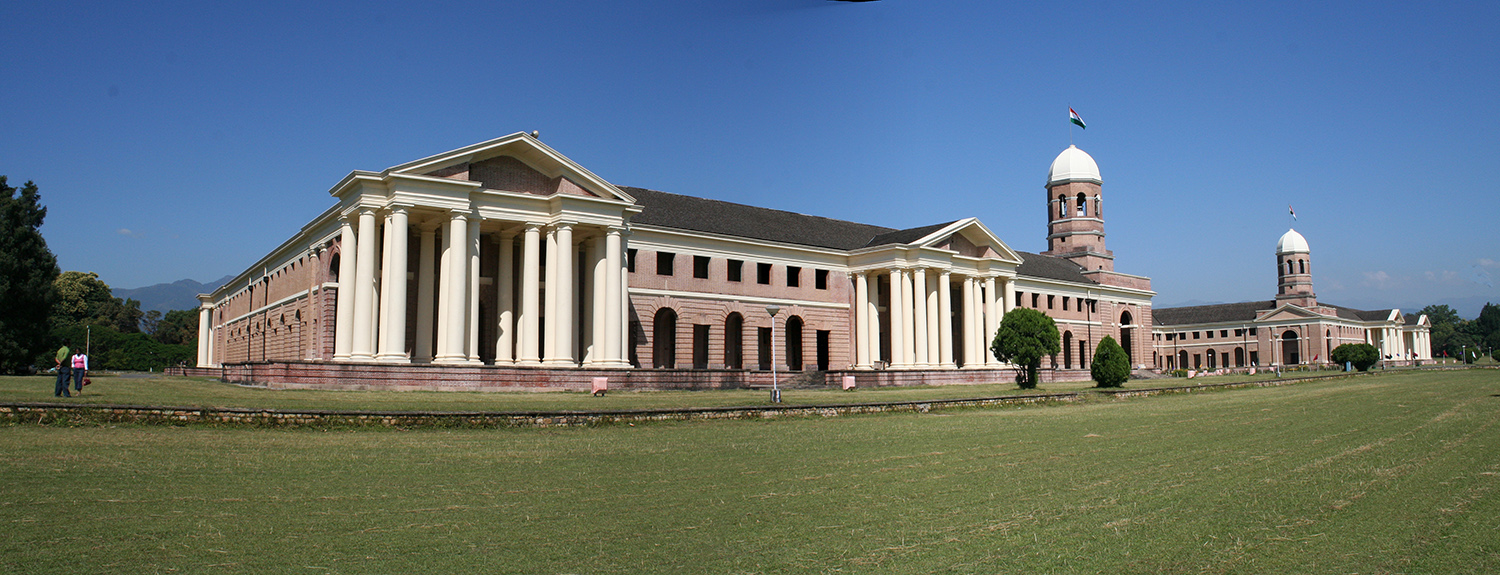Fulfilment of a divine dream by L. K. Advani
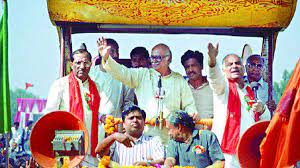
“When Prime Minister Shri Narendra Modi does the ‘Pran Pratishtha’ of Shri Ram Lalla’s idol at Ayodhya, he would be representing every citizen of our great Bharat”.
“Shri Ram embodies the spirit of India. The true spirit of India and Indianness is discipline, truth, honesty, ethics, moral values, acceptance and celebration of diversity, respect for elders, strong family bonds and all such fine human values“
SHRI RAM MANDIR – Fulfilment of a divine dream
The Original Unedited Article by Shri Lal Krishan Advani
I am elated beyond words that we are on the verge of realising my most cherished dream of having a grand Shri Ram temple at Ramjanmabhoomi, the birthplace of Shri Ram. On 22nd January 2024, Prime Minister Shri Narendra Modi will install the idol of Shri Ram at the beautiful temple in Ayodhya, and I feel blessed that I will witness this historic occasion in my lifetime.
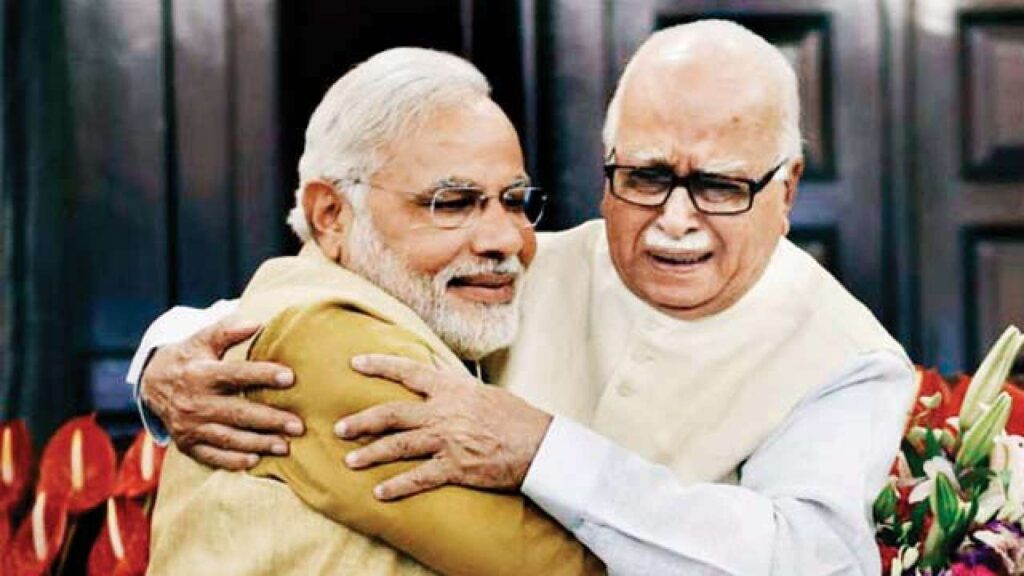
I have always believed that ‘faith’ is the foundation on which rest both a meaningful life of a person and the whole society at large. Faith not only infuses energy and confidence into a person’s life, but also helps give it direction. For me and for crores of Indians, this faith has been our deep reverence for Shri Ram.
Shri Ram embodies the spirit of India. The true spirit of India and Indianness is discipline, truth, honesty, ethics, moral values, acceptance and celebration of diversity, respect for elders, strong family bonds and all such fine human values and Shri Ram is the epitome of all these impeccable human qualities. Hence the title ‘Maryada Purushottam’ (an exemplar among good human beings) by which he is known. He is an ideal for Indians’ aspiration to live a life of higher values.
Shri Ram was also an ideal king- the living embodiment of ‘Dharma’. Hence the concept of ‘Ram Rajya’, the epitome of good governance, was extolled as the ideal for India. Although Shri Ram is the holy religious figure worthy of worship for the Hindus, he is a pre-eminent symbol of India’s cultural heritage and national identity -which belong to all citizens alike.
The story of Shri Ram’s life, the Ramayana, is both a source and a carrier of the continuity of India’s cultural traditions and has greatly influenced the Indian mindset generation after generation, century after century. Therefore, for the last almost 500 years, the reconstruction of the Ram Temple in Ayodhya has been a deep desire for countless Indians.
The Ramjanmabhoomi movement for the reconstruction of the temple at the Janmasthan of Shri Ram in Ayodhya proved to be a major watershed in the history of post-1947 India. Its impact on our society and polity, and on our sense of national identity has been tremendous.
In my own political journey, I have always said that the Ayodhya Movement was the most decisive transformational event, which gave me an opportunity to discover India anew, and in the process, rediscover myself.
I feel humbled that destiny made me perform a pivotal duty in the form of the Shri Ram Rath Yatra from Somnath to Ayodhya in 1990.
I believe that before any event finally occurs in reality, it takes shape and form in a person’s mind. At that time, I was feeling that a befitting temple for Shri Ram in Ayodhya would indeed be a certainty one day, and that it was only a matter of time.
A grand Mandir for Shri Ram at Ramjanmabhoomi had been a desire and mission for the Bharatiya Janata Party. When in the mid-1980s the Ayodhya issue rose to the centre-stage of national politics, I was reminded of the time how political stalwarts like Mahatma Gandhi, Sardar Patel, Rajendra Prasad and K M Munshi had, against all odds, effectively steered the reconstruction of another landmark temple in independent India- the Somnath Temple at Prabhas Patan on the coast of Saurashtra in Gujarat.
Somnath was both a witness to, and a target of, multiple foreign invasions during the medieval period. And reconstructing the Somnath temple was a proud testimony of India’s determination to erase the history of bigoted alien attacks and regain its lost cultural treasure.
Sadly, as in the case of Somnath, the temple at the birthplace of Shri Ram in Ayodhya had also become a target of attack by an invader, Babar, who founded the Mughal empire. In 1528, Babar ordered his commander Mir Baqi to erect a mosque at Ayodhya to make the spot a ‘place for descent of angels’- hence the name Babri Masjid.
It is widely believed, and later even confirmed by compelling archeological evidences that there was a pre-existing temple at Ayodhya which was demolished for establishing the mosque.
So in many ways, the Ayodhya movement was the continuation of the spirit of Somnath.
When the BJP decided in 1990 that I, as its President, should lead the Shri Ram Rath Yatra to mobilise people’s support for the Ayodhya movement, it took no time for me to choose Somnath as the starting venue of this historic journey.
On 12th September, 1990, I called a press conference at the party office at 11 Ashoka Road, New Delhi and announced my decision to undertake a 10,000-kilometre-long Rath Yatra, starting from Somnath on 25th September and reaching Ayodhya on 30th October to join the kar seva in Ayodhya, planned by the saints associated with the movement. 25th September was special to me as it is Deendayal Upadhyaya ji’s birth anniversary.
In my autobiography- “My Country My Life”, I have extensively talked about the Ayodhya Movement and the Shri Ram Rath Yatra that I undertook in 1990. On this momentous occasion today, I would like to recall some significant portions from it.
On the morning of 25th September 1990, I offered prayers at the jyotirlingam in Somnath temple. I was accompanied by the present Prime Minister, Shri Narendra Modi (who was then a promising leader of the BJP), Shri Pramod Mahajan, (who was the General Secretary of the party) other senior functionaries of the party in Gujarat, and members of my family. Rajmata Vijayaraje Scindia and Shri Sikander Bakht, both Party Vice-Presidents then, had come to flag off the Rath.
Before the Rath was flagged off, we all paid floral tribute to the imposing statue of Sardar Patel just outside the temple. In my mind, I thanked and drew inspiration from all the great men who had toiled for the reconstruction of the temple. Amidst a large crowd that had gathered to greet and bless us, we climbed the Shri Ram Rath which had been decorated with marigold flowers. Then, to the accompaniment of the sound of the ceremonial conches and full-throated slogans of ‘Jai Shri Ram’ and ‘Saugandh Ram ki khate hain mandir wahin banayenge’ (In the name of Ram, we resolve: We shall build the temple there—at Ramjanmabhoomi—itself), the Rath rolled on. In subsequent days, these slogans became identified with my yatra and a song-“Ram Naam Mein Jaadoo Aisa, Ram Naam Man Bhaaye, Man Ki Ayodhya Tab Tak Sooni, Jab Tak Ram Na Aayein…” sung by late Smt. Lata Mangeshkar, India’s Nightingale, became the signature tune of the Rath Yatra wherever it went.
I was truly overwhelmed by the response to the yatra within the first few days of our journey in Gujarat. The Rath was received by tumultuous crowds everywhere—in villages, towns and even along roads where people from nearby hamlets would gather under trees eagerly waiting for the Rath to arrive. The response reached a crescendo in bigger towns and cities, where it would take hours for us to reach the venue of our meetings.
This response was as big, even bigger, in Maharashtra as well as in all the subsequent states that we travelled through. People everywhere greeted the Rath by erecting ceremonial arches and showering flowers. The most astonishing sight for me was the manner in which people, especially women, would come forward and perform aarti and throw coins, as if they were praying in a temple. What I soon realized, was, that for many people, I was secondary and incidental to the campaign. I was only a sarathi or a charioteer; the principal messenger of the Rath Yatra was the Rath itself. And it was worthy of worship as it was headed for Ayodhya for the sacred mission of construction of the Shri Ram Temple at his birthplace.
At this point, I would like to talk a bit about the ‘Rath’ that I travelled in. It was a actually a mini truck that was redesigned to take the shape of a Rath and was provided with basic amenities.
Travelling in a ‘Rath’ was indeed a novel experience for me, but it presented its own set of challenges. For one, it had a small room-cum–washroom at the rear of the vehicle, which could only be used when the vehicle was not in motion, otherwise it was very bumpy. So I recall standing most times on the platform of the moving vehicle, holding on to the front and side grip bars in order to maintain my balance. Of course, this also meant being constantly subject to heat and dust as the platform was open from three sides.
Also while in motion, it was impossible for me to sip water, juice or tea without spilling. So a special sipper bottle was arranged to overcome this issue. As for food, although arrangements were made that the dinner would come from some party worker’s home in whichever city we were to reach for night halt, invariably the last public meeting would only end up close to midnight. So I would usually have just a glass of milk with marmalade on toast.
Another problem we often faced was due to the height of the Rath. Although the party officials had circulated the information about the height of the vehicle to various destinations along the route of the yatra, as we moved through small towns and cities, one of the frequent hold ups used to be the overhead hanging electrical wires. So party workers then arranged for extra long wooden poles to get the wires out of the way and also started moving along with the Rath. Well, all these were really miniscule issues which form just a small part of the beautiful memory of my Shri Ram Rath Ratra.
The most touching moments of the yatra were witnessed in villages and remote hamlets where the piety on the faces of the village folk was of a purer and deeper kind than what I saw in cities. Many of them were either illiterate or nominally educated. They had not learnt about Shri Ram by reading; it was as if the knowledge flowed through them, passed on from one generation to the other, through folk tales or word of mouth, as usually happens in the Indian society.
At many places, I found an odd villager who would come quietly, without shouting any slogans, perform a puja before the Rath, greet me and walk away. I was truly humbled by experiences like these as it gave me a first-hand insight into how deep-rooted religiosity is in the lives of the Indian people. It was the Rath Yatra that made me realise that if I were to communicate the message of nationalism through the religious idiom, I would be able to transmit it more effectively and to a wider audience.
My speeches, delivered mostly from the specially designed raised platform on the vehicle were just about five minutes long, because I had to address nearly twenty to twenty-five such roadside receptions each day. In most towns and cities, I had to get down and address public meetings attended by tens of thousands of people.
I would explain the purpose of the yatra and the circumstances that compelled the BJP to actively participate in the Ramjanmabhoomi movement. Although the people’s response to the Rath Yatra was mainly religious, the focus of my speeches was on nationalism, as I have always believed that the Shri Ram temple issue is intrinsically connected to our sense of Indianness.
A recurrent theme in my speeches was that the power of a positive approach to religious faith can contribute greatly to social transformation and nation-building. I stressed on the equal status that our Muslim brethren enjoyed in independent India as India chose to remain non-theocratic and secular. This, I added, was principally due to the age-old secular ethos of Hinduism. I also appealed to leaders of the Muslim community to respect the Hindu sentiments over Ayodhya.
My yatra was scheduled to enter Deoria in Uttar Pradesh on 24th October 1990. However, as I had anticipated, it was stopped at Samastipur in Bihar on 23rd October and I was arrested by the Janata Dal government in the state, then headed by Shri Laloo
Prasad Yadav. I was taken to an inspection bungalow of the irrigation department at a place called Massanjore near Dumka, on the Bihar-Bengal border.
This action invited angry and spontaneous protests all over the country.
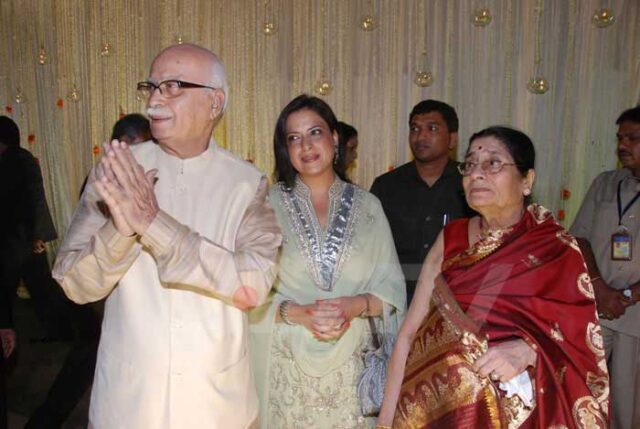
This was a time when there were no mobile phones. The news of my arrest reached my daughter Pratibha, who was in Kolkatta then, in quite an interesting manner. She was looking to hire a cab on way back to her home when the taxi driver told her to hurry up. On her enquiring from him why he was saying so, the taxi driver told her that Advani “Baba” had been arrested and people were fearing a backlash in the form of riots in the city! Two days later, Pratibha spoke to Laloo Prasad Yadav ji, who facilitated her coming to meet me at Massanjore during my detention. I spent five weeks in detention before being released.
Thus ended my Shri Ram Rath Yatra, which was indeed an exhilarating episode in my political life. I felt happy that the Yatra helped in galvanising the aspirations, energies and passions of its countless participants.
A significant debate that started during the course of the Ram Janmabhoomi movement was the difference between genuine secularism and pseudo-secularism. On the one hand, there was a groundswell of popular support for the movement. On the other hand, most political parties were shying away from supporting the movement as they feared losing Muslim votes. They succumbed to the lure of this vote-bank politics, and justified it in the name of secularism.
Thus, the Ayodhya issue, whose primary objective was the reconstruction of the Ramjanmabhoomi temple, also became a symbol of reclaiming the true meaning of secularism from the onslaught of pseudo-secularism.
It has been 33 long years since my Shri Ram Rath Yatra. A lot has happened since, including the legal battle which had implicated me and many of my colleagues from the VHP, RSS and the BJP.
However, after almost three decades, on September 30, 2020, the CBI’s special court acquitted me and others and released us from all charges.
It is pertinent to note that while on one hand the protracted legal battle was going on, on the other, not only I, but every karyakarta of the BJP and the Sangh Parivar continued working towards awakening the soul of Indians to realise this dream of restoring Ram Lalla at His rightful abode.
I am very happy that due to the decisive verdict of the Supreme Court in November 2019, the reconstruction of Shri Ram Mandir has happened in an environment of tranquility.
And now that the magnificent Shri Ram Temple is in its final stages of completion, I am filled with a sense of deep gratitude towards the present Government headed by Prime Minister Shri Narendra Modi, all organisations, particularly the Vishwa Hindu Parishad, Rashtriya Swayamsevak Sangh, Bharatiya Janata Party, the countless people associated with my yatra, saints, leaders, kar Sevaks and all the people from India and the world, who made valuable contributions and sacrifices in the Ayodhya movement over many decades.
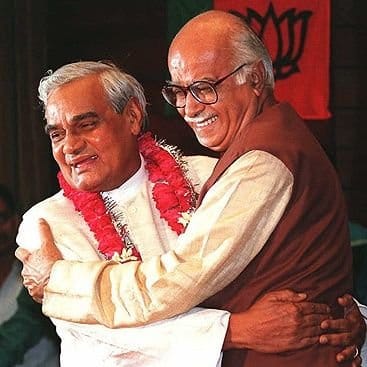
There are two persons who I am missing immensely today. The first one is late Shri Atal Bihari Vajpayee, who had been an integral part of my life- both political and personal, and with whom I shared an unbreakable and everlasting bond of mutual trust, affection and respect.
The second person is my late wife Kamla, who had been the mainstay of stability and a source of unparalleled strength to me, not only during the Shri Ram Rath Yatra, but throughout my long stint in public life.
In the run-up to the upcoming special occasion of 22nd January 2024, the atmosphere in the entire country has truly become ‘Ram-maya’. This is a moment of fulfilment for me, not just as a proud member of the RSS and the BJP, but as a proud citizen of our glorious motherland. My greetings to all my countrymen!
When Prime Minister Shri Narendra Modi does the ‘Pran Pratishtha’ of Shri Ram Lalla’s idol at Ayodhya, he would be representing every citizen of our great Bharat. It is my belief and my hope that this temple will inspire all Indians to imbibe Shri Ram’s virtues. I also pray that our great country not only continues to accelerate on the path of becoming a global power, but also presents itself as a sterling example of dignity and decorum in all walks of life.
I bow at the lotus feet of Shri Ram. May He keep everyone blessed.
JAI SHRI RAM!
Watch a documentary on LK Advani’s “Fulfillment of a Divine Dream”
